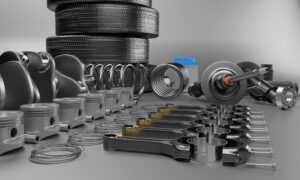Automotive sales have had a rollercoaster year. While they took a tumble during the pandemic, they are well on their way to a V-shaped recovery. Now is not the time, however, for automotive retailers to rest easy. COVID-19 has only further emphasized shifting preferences favoring digital retail experiences that many dealers are not ready to accommodate.
In a recent article, the automotive retail experts at Star described how consumers want contactless, digital, seamless, and transparent transactions, and they want it now. However, successfully delivering digital retail experiences is something few dealers are ready for.
Dealers can’t afford to sit around and wait. There is no time for a 3-5 year rollout. With startups and dealers disrupting the model, now’s the time to shift gears and embrace digital transformation.
Dealers are still essential for most buyers
Despite high dissatisfaction with the automotive sales process, consumers still want dealerships to be a part of the process. Since cars are such a big-ticket item generally exceeded only by home purchases, consumers both want to physically see and test drive vehicles while seeking advice from dealers.
But everything does start online. As more of the sales pipeline shifts to digital channels, both OEMs and retailers will need to integrate sales, marketing, lead generations, and other channels to keep up with digital retail trends.
Though dealers aren’t going anywhere, competition is fierce. With dwindling brand loyalty, traditional rivals, and new entrants that are completely shaking up the model like Carvana, dealers need to start making this transformation now.
Dealers must center digital retail
The consumer journey begins well before customers ever step foot inside a dealership. The vast majority of shoppers start with online research. They are well-informed, particularly about prices.
In the past, consumers visited up to five different dealerships. They’d gather information, comparison shop, and take their time making a decision.
Now, visiting the showroom is the final stage of the automotive retail journey. Rather five trips to different dealers, customers will only visit one average to test drive the vehicle and finish the transaction.
While this last step is still crucial, it shows how much the landscape has changed. Automotive retailers need to deliver rich, informative content online and be prepared to engage and effectively convert in the digital space to make sure customers show up at their doors.
This is much more than a confusing car configurator. Instead, companies that offer real-time inventory information, detailed pricing data, and customization options will thrive reaping the advantages of digital transformation.
It’s time to remove silos once and for all
The relationship between the auto manufacturer and retailer has always been complex. Consequently, while there are large amounts of valuable customer, transactional, and marketing data, it’s often siloed into separate repositories.
Even within auto companies themselves, marketing, sales, finance, and service teams focus on their own areas with limited data exchange.
This absence of cross-communication creates silos that negatively impact the customer sales journey. Take the customer who has driven sedans for years and is ready to move to something bigger. Even though she has even expressed this at the service department and to sales staff, she may still see ads and receive notices about sedan-related promotions. Nothing clears this feedback loop. At best, the customer is mildly annoyed, but in many cases they ultimately take their business elsewhere.
On the other hand, collaboration leads to increased web traffic, higher engagement rates, more deal visits, and overall higher customer satisfaction rates. While some automotive leaders have begun to interconnect their systems, there’s no true end-to-end framework, particularly as the chasm between dealers and manufacturers as large as it’s even been.
While 100% collaboration may as yet be unfeasible, dealers should focus on thoroughly informing consumers, tracking marketing campaigns, linking the departments under their control, and finding ways to use data to drive growth and begin the digital transition.
Dealers can achieve a successfully digital transition
While most dealers are nowhere near as prepared as they should be, there is still time to navigate a digital transition successfully. It all begins with a solid data foundation.
There are countless examples of automotive players who have done this already. Subaru is an excellent example of this. The manufacturers and dealers created teams to combine data across consumer touchpoints. Integrating social media, email, advertising, test drives, service records, and other areas, they personalized messaging and improved ad performance.
In doing so, Subaru increased both overall sales and significantly increased close rates at the dealerships. All of this also buffered against the worst of the pandemic’s impact, with Q2 sales declining less than major names like Toyota, Honda, Mitsubishi, Ford, and many others.
Not every dealer will be as fortunate to have an OEM partner invested in transformation as much as Subaru. But that’s beside the point. Dealers have always relied on their independence to drive sales. Today isn’t any different.
Digital retail is the battleground everybody is competing over. Whether you’re an independent dealer, part of an association, or any automotive retail player, now is the time to stake your claim.



































